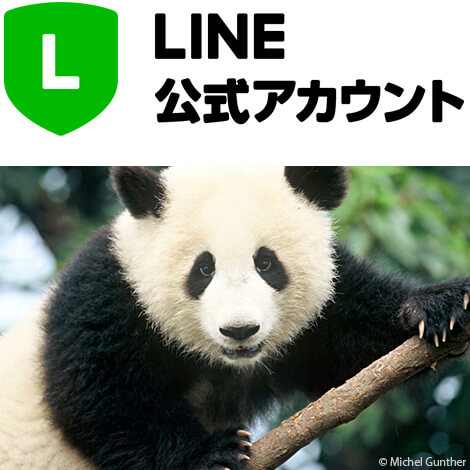緊急:2010年1月19日のヒマラヤの氷河消失に関する報道について
2010/01/21
一部の報道では、IPCC(気候変動に関する政府間パネル)が謝罪したとされる、ヒマラヤの氷河に関する誤った記述の典拠が、WWFの報告書によるものとされています。
これらの報道が指摘する、IPCC報告書の問題箇所の引用表記については、事実の誤認があるとWWFは考えております。
しかし一方で、WWFがレポートに、IPCCが誤りであったとした引用文献と同じものを引用していたことは事実であり、WWFも同様の記述を元文献から安易に引用した責任は、大きいと感じております。
何よりも科学的根拠を基礎として活動している団体として、今後このようなことがないように、情報の精査と、活動の改善を図っていきたいと考えております。
IPCC報告書の問題箇所の引用表記について
この件に該当する、IPCCの第四次評価報告書(第二作業部会報告)は、以下の通りです。
“Glaciers in the Himalaya are receding faster than in any other part of the world (see Table 10.9) and, if the present rate continues, the likelihood of them disappearing by the year 2035 and perhaps sooner is very high if the Earth keeps warming at the current rate. Its total area will likely shrink from the present 500,000 to 100,000 km2 by the year 2035 (WWF, 2005).”
出典: The IPCC (http://www.ipcc-wg2.gov/AR4/website/10.pdf )
ここには、WWFが2005年に発表したレポート(Overview of Glaciers, Glacier Retreat, and Subsequent Impacts in Nepal, India and China) の29ページ目が参照文献として示されています。
しかし、この2005年のレポートは、WWFが文献研究(Literature review)として、さまざまな学説をまとめたものであるため、これを科学的文献として参照する場合は、本来その元文献を引用文献として表記するのが適切です。しかし、ここでは、WWFの研究報告であるかのように、引用されています。
また、このWWFのレポートで紹介されている文献は、上記にあるIPCCの報告書の記述のうち、前半部分のみを指摘したもので、内容の全ての根拠となるものではありません。
WWFがレポートで紹介した文献は、1999年にWorking Group on Himalayan Glaciology (WGHG)によって発表されたもので、WWFのレポートが紹介した箇所は以下のとおりです。また、これが、該当する内容の全てです。
In 1999, a report by the Working Group on Himalayan Glaciology (WGHG) of the International Commission for Snow and Ice (ICSI) stated: “glaciers in the Himalayas are receding faster than in any other part of the world and, if the present rate continues, the livelihood[sic] of them disappearing by the year 2035 is very high”.
Overview of Glaciers, Glacier Retreat, and Subsequent Impacts in Nepal, India and China
http://assets.panda.org/downloads/himalayaglaciersreport2005.pdf
29ページ Introduction
問題となる資料の本当の原典
この文献のオリジナルは、Down to Earth というオンラインの出版物で、1999年4月30日に出された記事 Glaciers Beating Retreat.に掲載されたものです。ここには掲載された文章の原文は以下のとおりです。
"Glaciers in the Himalaya are receding faster than in any other part of the world and, if the present rate continues, the likelihood of them disappearing by the year 2035 is very high," says the International Commission for Snow and Ice ( ICSI ) in its recent study on Asian glaciers. "But if the Earth keeps getting warmer at the current rate, it might happen much sooner," says Syed Iqbal Hasnain of the School of Environmental Sciences, Jawaharlal Nehru University, New Delhi. Hasnain is also the chairperson of the Working Group on Himalayan Glaciology ( WGHG ), constituted in 1995 by the ICSI. "The glacier will be decaying at rapid, catastrophic rates. Its total area will shrink from the present 500,000 to 100,000 square km by the year 2035," says former ICSI president V M Kotlyakov in the report Variations of snow and ice in the past and present on a global and regional scale (see table: Receding rivers of ice ).
IPCCの報告と、上記のGlaciers Beating Retreatの文献を比較すると分かるとおり、この両者には、非常に多くの共通した点が見られます。
一方で、こちらの元文献には、WWFレポートでは触れていない、いくつかの内容が見られます。
たとえば、IPCCの報告には、 “total area will likely shrink from the present 500,000 to 100,000 km2 by the year 2035.” また、“perhaps sooner is very high if the Earth keeps warming at the current rate.”といった内容の記述がありますが、WWFのレポートに、これらに該当する文章は全く入っていません。
従って、今回IPCCが明らかにした報告書の誤りの箇所は、おそらくこの元文献を参照し、作成した可能性が高いものと思われます。
また、それが事実で合った場合、IPCCは、こちらの元文献Down to Earth 、30 April 1999、 Glaciers Beating Retreat.を、参照文献としてあげることが適切であったといえます。
WWFレポートの誤りについて
しかし同時に、WWFが発表した2005年のレポートも、上記の原典から、「現在のスピードで氷河が溶けていった場合に2035年までに消失する可能性が高い」と引用しており、その責任は重いと考えております。
今回、WWFは、同じレポートの中で、IPCC報告書の内容と重複する問題の箇所(レポート29ページ目)の他、冒頭のエグゼクティブサマリーの中でも、下記のような形で、問題の参照文献を引用しました。
The New Scientist magazine carried the article “Flooded Out – Retreating glaciers spell disater for valley communities” in their 5 June 1999 issue. It quoted Professor Syed Hasnain, then Chairman of the International Commission for Snow and Ice’s (ICSI) Working Group on Himalayan Glaciology, who said most of theglaciers in the Himalayan region” will vanish within 40 years as a result of global warming”.
WWFとしては、レポート作成した2005年の時点では、この文献は信頼できるものと考え、引用いたしましたが、この内容が、明らかに間違いであることが確認されるにおよび、2010年1月7日に、スイスの本部WWFインターナショナルは、記述が誤りであったことを認め、レポート中での修正を追記しました。
こちらの修正は、レポートの本文(Overview of Glaciers, Glacier Retreat, and Subsequent Impacts in Nepal, India and China)の表紙裏に記述してあります。この修正を加えた新たなレポートは、こちらからダウンロードできます。
Overview of Glaciers, Glacier Retreat, and Subsequent Impacts in Nepal, India and China
http://assets.panda.org/downloads/himalayaglaciersreport2005.pdf
WWFは、何より科学的根拠を基礎として活動する団体として、元文献の科学的信用度をダブルチェックする必要があったにもかかわらず、安易に引用してしまったことを、深く反省し、今後このようなことのないように、組織的に改善努力を図ってまいります。
また、一方で、本件をもって、温暖化が事実では無い、という風評が立つことについては、憂慮の念を抱いております。ヒマラヤの氷河の融解は今も進んでいる事実であり、気候変動の脅威がさらに加速しているということ、また、その結果もたらされる脅威を防ぐため緊急の取り組みが必要であることについては、WWFの見解が変わるものではありません。
WWFでは、今後とも気候変動の脅威を伝えながら、その防止を目指した活動を続けてゆきます。皆さまのご理解とご支援を、今後ともよろしくお願い申し上げます。
(2010年1月22日 情報修正・追加しました)







